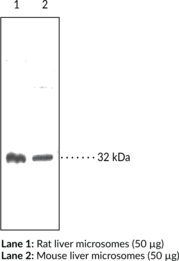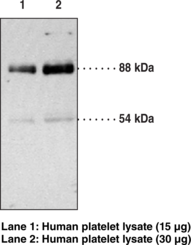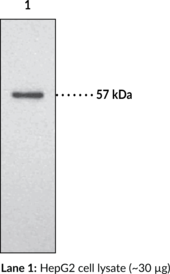Description
GluR1 is a subunit of the AMPA ionotropic glutamate receptor, which is responsible for fast excitatory synaptic transmission in the CNS.{59665} AMPA receptors are composed of four subunits, GluR1, GluR2, GluR3, and GluR4, which combine into heterotetramers to form a cation-permeable pore in the plasma membrane. Each subunit has two isoforms with the primary isoform designated as flip and a second isoform generated through alternative splicing designated as flop.{59667,52879} The GluR1 flip and flop isoforms do not affect desensitization or channel opening and closing kinetics.{52879} GluR1 can be phosphorylated by PKA at serine 845 (Ser845), which increases the peak open probability of the ion channel, and dephosphorylation is required for AMPA receptor endocytosis.{59665} GluR1 (phospho-Ser845) levels increase in the ventromedial prefrontal cortex (vmPFC) and nucleus accumbens (NAc) following cocaine-cue extinction.{59666} Levels of GluR1 (phospho-Ser845) are reduced following NMDA receptor activation in rat hippocampal slices and by amyloid-β (Aβ) oligomers in primary mouse neurons.{59668,59669} Cayman’s GluR1 (Phospho-Ser845) Rabbit Monoclonal Antibody can be used for immunohistochemistry (IHC) and Western blot (WB) applications.
Synonyms: AMPA-selective Glutamate Receptor 1|GluA1|GluR-1|GluR-A
Immunogen: Peptide corresponding to human GluR1 (phospho-Ser845)
Formulation: 100 µl protein A-purified monoclonal antibody
Isotype: IgG
Applications: IHC, WB
Origin:
Stability: 365 days
Application|Immunohistochemistry||Application|Western Blot||Product Type|Antibodies|Monoclonal Antibodies||Research Area|Neuroscience|Behavioral Neuroscience|Addiction Research||Research Area|Neuroscience|Neurodegenerative Disorders|Alzheimer’s Disease




